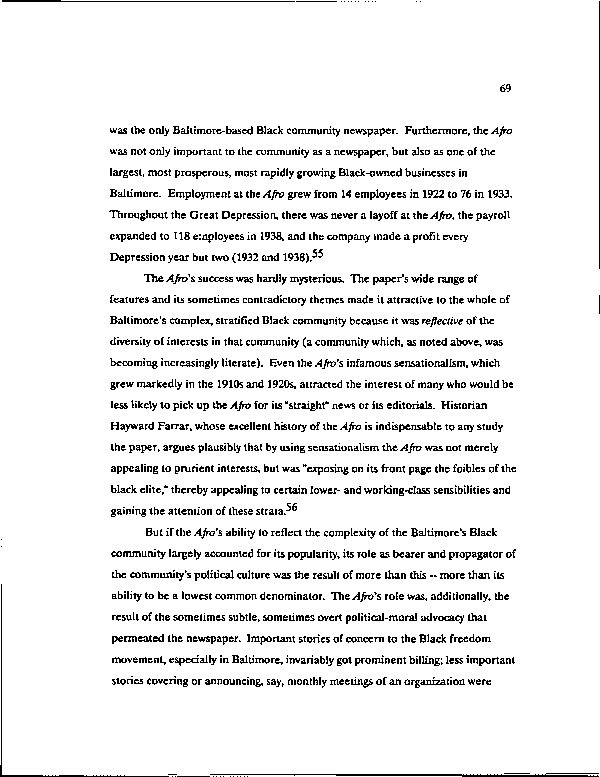|
69
was the only Baltimore-based Black community newspaper. Furthermore, the Afro
was not only important to the community as a newspaper, but also as one of the
largest, most prosperous, most rapidly growing Black-owned businesses in
Baltimore. Employment at the A fro grew from 14 employees in 1922 to 76 in 1933.
Throughout the Great Depression, there was never a layoff at the Afro, the payroll
expanded to 118 employees in 1938, and the company made a profit every
Depression year but two (1932 and 1938).^5
The Afro's success was hardly mysterious. The paper's wide range of
features and its sometimes contradictory themes made it attractive to the whole of
Baltimore's complex, stratified Black community because it was reflective of the
diversity of interests in that community (a community which, as noted above, was
becoming increasingly literate). Even the Afro's infamous sensationalism, which
grew markedly in the 1910s and 1920s, attracted the interest of many who would be
less likely to pick up the Afro for its "straight" news or its editorials. Historian
Hayward Farrar, whose excellent history of the Afro is indispensable to any study
the paper, argues plausibly that by using sensationalism the Afro was not merely
appealing to prurient interests, but was "exposing on its front page the foibles of the
black elite," thereby appealing to certain lower- and working-class sensibilities and
gaining the attention of these strata.^"
But if the Afro's ability to reflect the complexity of the Baltimore's Black
community largely accounted for its popularity, its role as bearer and propagator of
the community's political culture was the result of more than this — more than its
ability to be a lowest common denominator. The Afro's role was, additionally, the
result of the sometimes subtle, sometimes overt political-moral advocacy that
permeated the newspaper. Important stories of concern to the Black freedom
movement, especially in Baltimore, invariably got prominent billing; less important
stories covering or announcing, say, monthly meetings of an organization were
|

